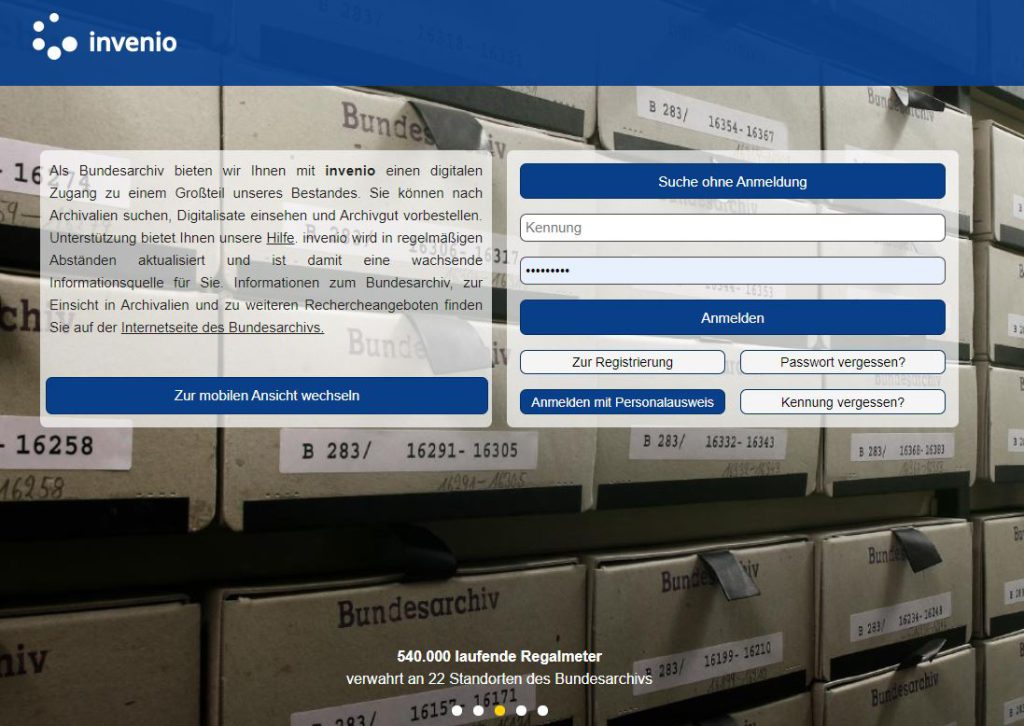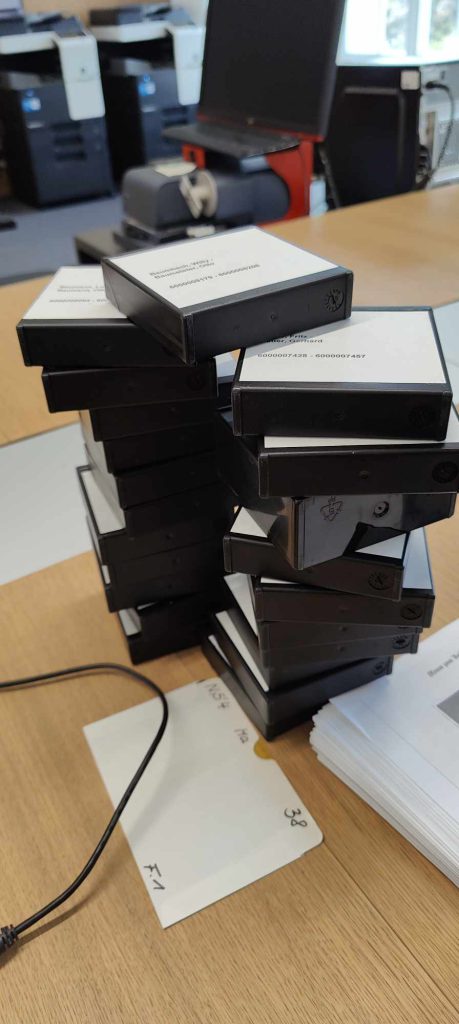Now we are in part three, in the first two parts we have covered important points when it comes to searching the Bundesarchiv. Now for a boring thing, the Bundesarchiv used to have a collaboration with Selke GmBH who copied files for you, for a cost of course. But you got what you ordered. For our part, this involved bringing home RuSHA files from Berlin Lichterfelde.
Since the turn of the year, the Bundesarchiv has ended the collaboration with Selke GmBH and they have introduced something called “Digitalisierung on Demand” (DoD), which means, if you are a registered user, that you can order files. Wow! Was my first thought, absolutely fantastic! BUT! Now we come to the bad part, you can only take home 10 acts in your registered area, and only ONCE, so if you, like us, are working on a big project, this was only a shot in the air, because what is 10 acts out of 1000 -numbers.
We have sent in an email to the Bundesarchiv with criticism, and that this was probably not the idea behind “DoD”, we are eagerly awaiting what they might write.
But to return to Invenio , our best stable tip is to start using “Navigierende Suche” and click your way forward, click in the box “Nur digitalisat anziegen” (show only digitalized) and you will get rolls that you can take home at once ( most often). It’s the only way to learn how the site works, because you can’t expect another researcher to do the work for you. Time is something that all researchers have too little of.

Learn where you can find different things, for those of us dealing with the Second World War, the “Norddeutscher Bund und Deutsches Reich (1867/1871-1945)” tab is the obvious choice, but then you also have a lot to find under “Nachlasse” but as I said, click through and learn the structure.
However, through a friend, over the weekend we came across a number of new groups on Invenio that we had missed, this meant that we have already brought home some Terrabyte of info, and have another 1000’s of pages to skim through. These rolls had a lot of info about RK, DkiG, Ehrenblatt, EK, KvK and other bits and pieces. Priceless in our opinion.
When you come to Invenio, you will see on the first page that you can “suche ohne anmeldung” which means that you can look around and download things that they have made available on the Internet. We use it when we search via mobile phone and are on the move.
Another hot tip, learn your username at the Bundesarchiv, you will need this when communicating with the Bundesarchiv. It’s a bit illogical username but it can be learned, because it’s ALWAYS BA. Since the year you registered, i.e. BA.2024.and then a six-digit number.
Now that you are sitting in the reading room of the Bundesarchiv and you have ordered a number of rolls, you can only order 40 files at a time, through the “merkzettel”, but if you, like me, have become a bit friends with the staff, you can submit an additional order when you are on site. The last time I was there I had a total of 60 rolls in two days. I found the staff at the Bundesarchiv to be very diligent. You then have a microfilm reader, where you either have 35 mm Microfilm or 16 mm. You load the machine and start searching, if you’ve been good and checked roughly where the information you’re looking for is on the roll, it’s quick. We who have the index of the RuSHA rolls knew exactly how many officers there were on each roll and where, hence we could manage as much as we did. Don’t waste tif and read on the spot, copy everything you can and then read at home in peace and quiet. Now if you don’t live near the Bundesarchiv and have all the time in the world. For us who live 1600 km from the Bundesarchiv, time is precious and do your homework!

To look at the SS, you can download documents from all the “personnel files” without problems, bring some new usb sticks, the Bundesarchiv wants to check before you use them and then download. Acts with “sachakte” i.e. You are ABSOLUTELY not allowed to download SS-RuSHA digitally, the reason is simple, it is Germany’s privacy laws that come into force there. We have signed a document in which we commit, legally, not to disclose diseases, diagnoses, etc. that we get access to through the RuSHA files. On this point they are very strict, last winter when we were there shooting the screen, staff came to us and said “Herr Schwab, nur drücken” .. Yes, this has meant that we will soon have a running meter with RuSHA sterns here in our archive. Don’t be afraid of the cost, 367 pages cost us €12.80, which is nothing in the context.
In the next episode we check out the National Archives in the USA!


